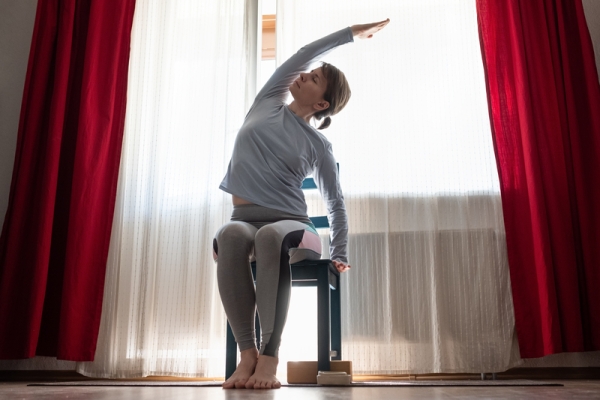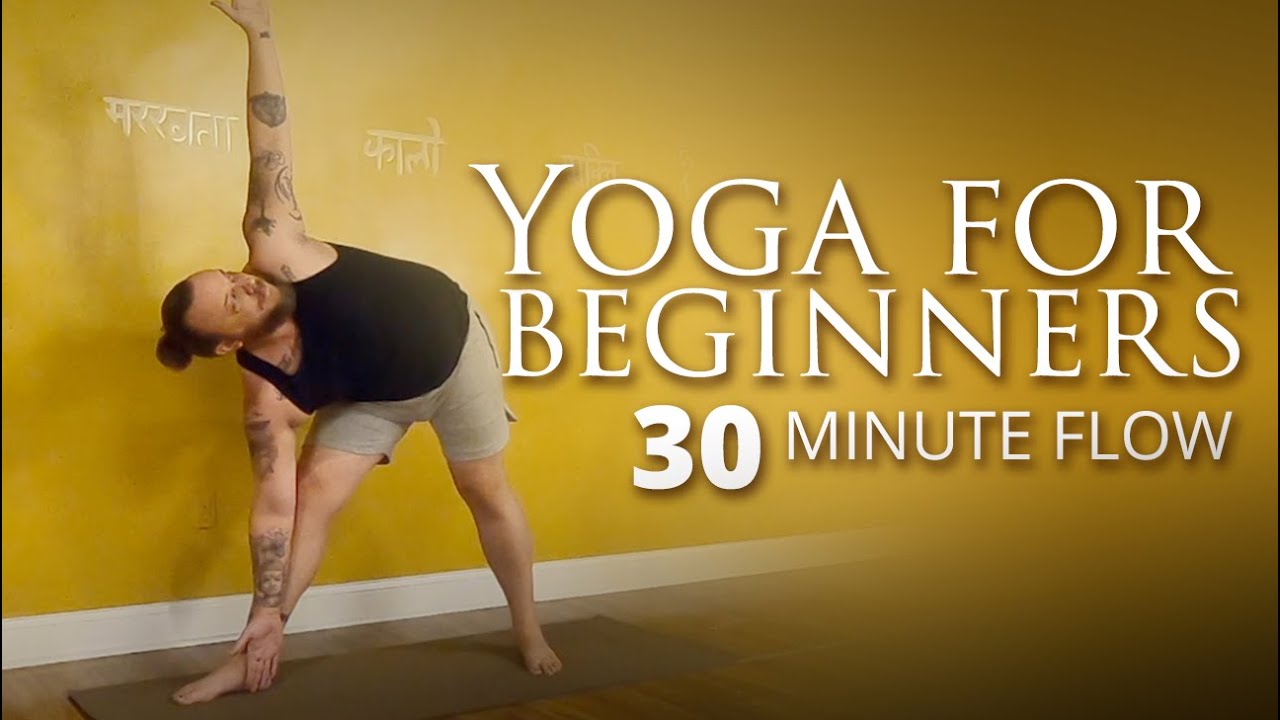Yoga is a great form of exercise. However, certain stretches and poses can be challenging. This can make practicing yoga seem daunting, if not impossible, for many, including those that are disabled. But chair yoga can be performed by almost anyone. It’s gentle and easier for most people but still offers tons of advantages and a boost to flexibility and athleticism.

What is Chair Yoga?
Traditional yoga practices have many benefits, but they aren’t possible for everyone. Those with balance, mobility, and strength issues can sometimes struggle with certain poses and forms. Fortunately, with the addition of a chair, many poses can be modified. The result is chair yoga, which can be an amazing solution to make yoga more accessible for every practitioner.
Who is Chair Yoga For?
Chair yoga is meant for nearly anyone that is interested in trying it out. However, there are certain groups of people that make particularly benefit from this practice.
For instance, chair yoga is especially great for anyone that has a physical limitation. Injuries can often prevent people from moving in certain ways, which makes standard yoga more difficult. A chair can provide additional support and stabilization so that yoga is still possible while they are recovering.
Additionally, many chair yoga practitioners are elderly. This is because chairs can help those with impaired balance and flexibility more easily practice yoga. Plus, the safety of chairs can help reduce the risk of falling. This means chair yoga also be a very useful technique for people with dementia and Alzheimers.
Who Should Not Practice Chair Yoga?
While most people can benefit from a chair yoga practice, there are exceptions. Unfortunately, like any exercise, it’s not for everyone.
People who have suffered a heart attack or have chest pains may find that the strain is too great for them. Likewise, those with an active infection should avoid participating in chair yoga.
Other ailments, like arthritis and joint issues, high blood pressure, or heart disease, may cause issues too. Those with any concerns should reach out to a medical professional to clear them before attempting chair yoga.

How Do You Use Chairs In Yoga?
There are three main ways that chairs can be used in yoga. To start, they can effectively modify most traditional poses. By using them as a prop, a chair can reduce the distance that someone has to bend when they are entering a pose like downward-facing dog.
Alternatively, when a chair is utilized, yoga can be practiced from a seated position. This can help people that have difficulty standing for extended periods of time. The chair can offer them additional support and keep them off of their feet.
Finally, chairs can also be used to help people balance. Sitting isn’t the only option for poses that usually require standing. Instead of taking a seat, practitioners can use the back of the chair for support. This can also help them build strength and eventually graduate to standing without a chair.
What Are The Benefits of Chair Yoga?
Chair yoga can aid practitioners in many ways. For starters, it shares many benefits with traditional yoga. Many of these are physical, but some can be mental too.
For instance, it is an excellent way to improve one’s agility and balance. It can also tone the body and increase muscle strength. Plus, as all types of yoga can be a great form of cardio exercise, chair yoga can promote cardiovascular health and weight loss, as well as help people keep in shape.
Yoga can have a substantial effect on the mental health of practitioners too. It is an ideal way to help people relax and reduce stress levels. It also can enhance concentration and awareness too.
Chair yoga, specifically, is a good way to reduce aches and pains, especially those that are associated with injury. Furthermore, it can help prevent injury from occurring in the future because it promotes flexibility and athleticism.
Plus, chair yoga is beneficial because it can be practiced by people that may not otherwise be able to perform yoga poses.
Chair yoga can be a phenomenal form of exercise for most people.
It’s a very inclusive practice that can accommodate people that have limited mobility, physical disabilities, injuries, balance problems, or simply are concerned about falling. By simply adding a chair to support certain stretches, practitioners are able to exercise with more safety and comfort. Plus, it can help them to become stronger and more flexible while boosting relaxation and mindfulness.

















